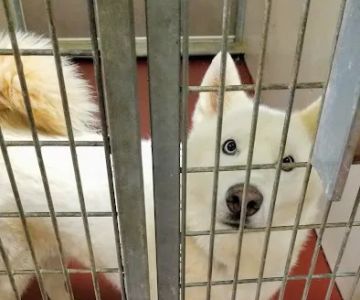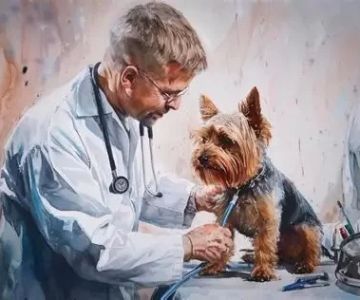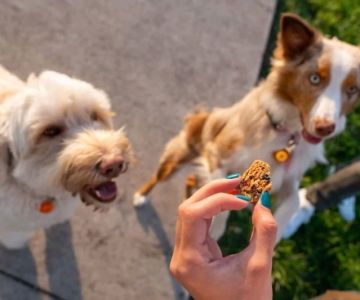- understanding-cat-obesity
- causes-of-cat-obesity
- signs-of-overweight-cats
- preventive-measures-for-cat-obesity
- importance-of-regular-vet-checkups
- real-life-success-stories
1. Understanding Cat Obesity
Obesity in cats is a growing concern for many pet owners. Just like in humans, carrying excess weight can lead to a range of health problems for your feline friend, including diabetes, heart disease, joint issues, and a shorter lifespan. It’s crucial to understand what causes obesity in cats and how to prevent it, ensuring your cat stays healthy and happy throughout their life.
At Hidden Brook Veterinary, we are dedicated to helping cat owners keep their pets in optimal health. By focusing on prevention and healthy lifestyle choices, we can help you avoid the costly and distressing consequences of obesity.
2. Causes of Cat Obesity
2.1 Overfeeding and Poor Diet
One of the most significant contributors to cat obesity is overfeeding. While it’s tempting to spoil your cat with extra treats or large portions, this can easily lead to weight gain. Cats need a balanced diet, and their food intake should be closely monitored to avoid overeating. High-calorie, low-nutrient foods can also contribute to weight gain, so it’s essential to choose quality food that meets their nutritional needs.

845 W Ridge Rd, Gainesville, GA 30501, USA
See Details2.2 Lack of Exercise
Cats, especially indoor ones, often don’t get enough exercise to maintain a healthy weight. While cats naturally love to explore and play, they may not be as active as their wild ancestors. Without sufficient physical activity, calories from food aren’t burned off, leading to fat accumulation. Regular playtime and stimulating activities are key to keeping your cat fit and healthy.
2.3 Age and Genetics
Age and genetics also play a role in a cat’s propensity to gain weight. As cats age, their metabolism slows down, and they may become less active. Some breeds, such as the British Shorthair and Maine Coon, are genetically predisposed to gaining weight. While you can’t control genetics, understanding your cat’s individual needs and adjusting their diet and exercise routine accordingly can help mitigate the risk of obesity.
3. Signs of Overweight Cats
3.1 Visible Fat Deposits
The most obvious sign of obesity in cats is visible fat deposits. Overweight cats often have noticeable bulges, particularly around their abdomen and face. If your cat has trouble grooming or seems to have a thicker, rounder body shape, it may be time for a closer look at their diet and exercise habits.
3.2 Difficulty Moving or Jumping
Obesity can also affect your cat’s mobility. Cats who are overweight may have difficulty climbing, jumping, or moving around as easily as they used to. If your cat is becoming sluggish or avoids physical activity, this could be a sign that they are carrying excess weight.
3.3 Reduced Activity Level
Inactive cats are often a red flag for obesity. If your cat used to enjoy running around or playing but has become more sedentary, it may be due to the physical discomfort associated with extra weight. Cats who gain weight may experience joint pain or discomfort, making it harder for them to engage in physical activities.
4. Preventive Measures for Cat Obesity
4.1 Balanced Diet
Feeding your cat a balanced diet is one of the most important steps in preventing obesity. Choose high-quality, age-appropriate cat food that is rich in protein and low in unnecessary fillers. Measure your cat’s food portions according to the feeding guidelines on the package or as advised by your veterinarian, and avoid overfeeding. Consider using a food puzzle feeder to slow down eating and prevent overeating.
4.2 Regular Playtime and Exercise
Encourage your cat to stay active by incorporating daily playtime into your routine. Use toys that stimulate your cat’s natural hunting instincts, such as laser pointers, feather wands, and interactive toys. Set aside time each day for energetic play, and create an environment that encourages movement, such as climbing structures or scratching posts.
4.3 Healthy Treats in Moderation
While it’s okay to give your cat occasional treats, it’s important to be mindful of the quantity and nutritional content. Choose low-calorie, healthy treats and limit the number you give. Treats should never make up more than 10% of your cat’s daily calorie intake. At Hidden Brook Veterinary, we offer a variety of healthy cat treats that are perfect for rewarding your cat without compromising their health.
4.4 Regular Feeding Schedule
Establishing a consistent feeding schedule is essential in preventing obesity. Free-feeding (leaving food out all day) can lead to overeating, as cats may eat out of boredom rather than hunger. Instead, feed your cat at set times each day to help regulate their food intake.
5. Importance of Regular Vet Checkups
5.1 Early Detection of Health Issues
Regular vet checkups are essential to monitor your cat’s overall health and detect any potential weight-related issues early on. A veterinarian can help assess whether your cat is at a healthy weight and provide tailored advice on diet, exercise, and lifestyle changes to prevent obesity. They can also screen for underlying conditions that might contribute to weight gain, such as thyroid issues or diabetes.
5.2 Tailored Weight Management Plans
If your cat is already overweight, your vet can help develop a customized weight loss plan, which includes adjusting their diet, feeding schedule, and exercise routine. This professional guidance ensures that your cat loses weight safely and effectively, without causing harm to their health.
6. Real-Life Success Stories
Meet Bella, a 7-year-old tabby who had struggled with obesity for years. Bella’s owners noticed that she had become lethargic and had trouble jumping on the couch. After visiting Hidden Brook Veterinary, Bella’s vet recommended a diet overhaul and a structured exercise routine. Over the course of six months, Bella lost 3 pounds and regained her playful, energetic personality. Her owners now follow a consistent feeding and exercise schedule, and Bella is more active than ever.
Another success story involves Leo, a 5-year-old Maine Coon who was predisposed to obesity due to his breed. Leo’s owners worked with their vet to create a specialized meal plan and ensure that he stayed active. With the right adjustments, Leo maintained a healthy weight, and his owners noticed a significant improvement in his mobility and overall health.











